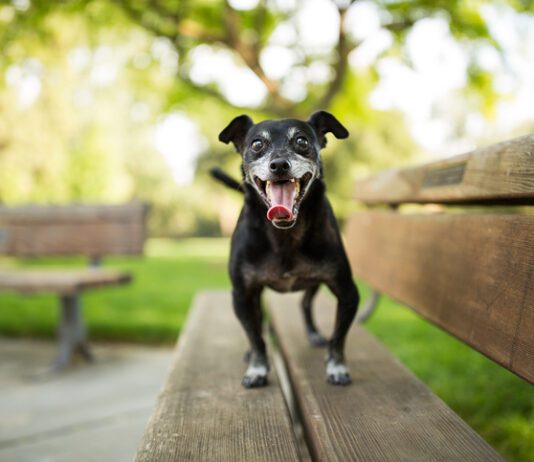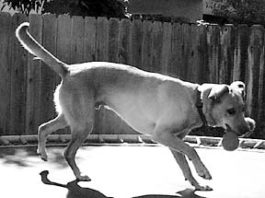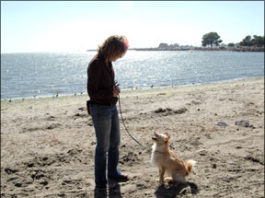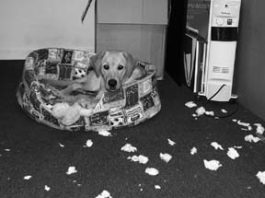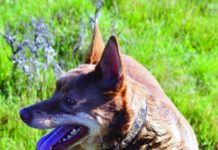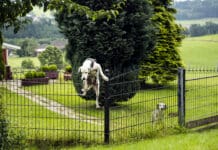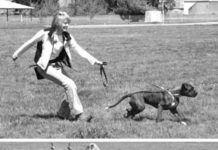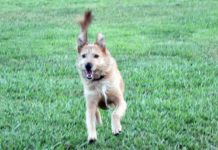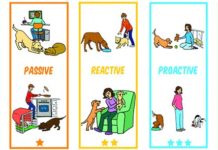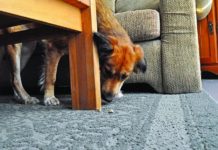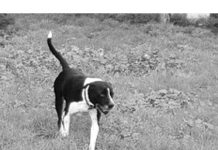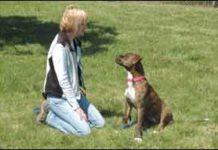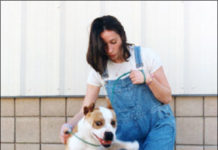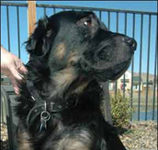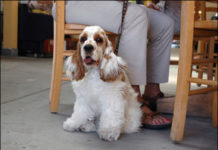How to Deal with a Dog Who Eats Poop
Most of us find a dog's habit of eating feces to be the most disgusting thing that a dog can do. The clinical name for this behavior is coprophagy (pronounced kä - prä - fey - je), from the Greek words copro, which means feces, and phagy, which means eat. The habit is not just revolting to us humans, it's also potentially harmful to the dog's health.
Runaway Dog: Preventing Your Dog From Escaping
How to safely confine burrowers, bounders, beavers, and bolters. Otis the Bloodhound was an opportunistic escapee. I discovered his talent one day while working at the front desk at the Marin Humane Society, early in my animal protection career. A woman came in asking if we might know where a Bloodhound lived, because he kept visiting her house every day. He was charming, she said, but she worried that he might get hit by a car.
Training an Over-Aroused Dog
It's true that dogs like Australian Shepherds, a breed commonly referred to as high drive" and thought of as "needing to work
Teach Your Dog to Focus On Cue!
Teaching your dog to focus on you (on cue!) is a vitally useful skill – and not that difficult if you follow our step-by-step directions.
Training Your Dog to ‘Wait’ and ‘Stay’
can save your dog's life.
Thanks to Morgan Macy, training assistant at The Canine Connection in Chico, CA, for demonstrating these techniques.üStart teaching the food bowl wait" with the food bowl held high. Look for your dog to shift her eyes from the bowl to your face.üClick (or use another marker) to indicate she's doing it right
Thanks to Morgan Macy, training assistant at The Canine Connection in Chico, CA, for demonstrating these techniques.üStart teaching the food bowl wait" with the food bowl held high. Look for your dog to shift her eyes from the bowl to your face.üClick (or use another marker) to indicate she's doing it right
Properly Supervising Dogs
Five types of dog-to-dog supervision, from left to right (or from 1 to 4 stars): No adult supervising dogs; Adult present but distracted; Reacting after the dogs are too close; Having a plan, being prepared; Fully present, adult supervision
Nose Work is Great Exercise for Dogs!
When your dog has learned how to search, this makes a great rainy day indoor exercise activity. You can also routinely scatter her meals around the yard so she has to search through the grass to find them; put her on a long line if you don't have a fence. You can also name her favorite toys and have her find them. You can even have family members and friends hide and have her find them.
Training Your Dog to Behave Around Guests
Whether you have a pup with normal puppy energy or an obstreperous teenager who has good manners lessons to catch up on, clicker training can be a magically effective and gentle way to convince a dog to calm down. No yelling, no physical punishment; just clicks and treats for any pause in the action. That said, the biggest challenge with a hyper" dog is that any praise or reward may cause her to begin bouncing off the walls again. It is nearly impossible to deliver a treat to an excitable dog while she is still in the act of being calm. By the time you get the treat to her mouth she is once again doing her Tasmanian devil act."
Teaching Your Dog Calm, Slow Breathing
Radio talk show psychologist Dr. Joy Browne offers her listeners a stress-reducing “Square Breathing” technique. To relax before or during any potentially anxiety-producing experience, try square breathing: Inhale to the count of four, hold to the count of four, exhale to the count of four, and hold for four. With practice, you can increase each side of the “square” to a count of eight or even 20; the longer the count, the slower and more calming the breathing.
Canine Acupressure to Calm High Energy Dogs
These are too-common refrains of guardians of dogs who are bouncing off the walls: "She has way too much energy!" "This dog is out of control!" "I've had enough of this crazy dog, he's a maniac!" You can love your dog to pieces, but if his behavior is unruly, it can be very hard to live with on a steady basis. One of the most common reasons dogs are released to shelters is because they are out of control. Hyperactive dogs are frequently difficult for their owners to enjoy. Surviving this situation may stressful for you, your family, guests - and the dogs themselves. The first step is to have the dog evaluated by your trusted holistic veterinarian, to determine if there is any underlying medical condition. Hyperactivity, also called "hyperkinesis," actually can be the result of a medical condition that is characterized by frantic behavior, incessant movement resulting in exhaustion, a consistent elevated heart rate, panting, loss of weight, vomiting, and increased appetite or loss of appetite. Canine compulsive disorders such as tail-chasing, self-mutilation, and other nonproductive, repetitive behaviors are usually considered forms of hyperactivity.
Behavior Modification for Itchy Dogs
Excessive self-licking and chewing can be caused by a medical issue. It can also be a behavioral problem, a classic example of an obsessive/compulsive disorder. Either way, it's annoying to the dog's human companion, and dangerous to the health of the dog. Here are tips for dealing with dogs who self-lick and chew excessively. To begin behavior modification, determine your dog's stressors and start eliminating them. Make a list of everything?you can think that is stresses your dog even just a little bit, even if the stressors don't seem directly related to the licking. Your list might include thunder, small children, dogs on television, cats, riding in cars, visits to the vet, shock collars, medical issues, and many more. Most owners can identify between 10 and 20 stressors for their dogs.
Uncommonly Calm Canines
Most dog owners are pleased when their dogs are calm - even the owners of high-energy competition and working dogs, when those dogs are "off-duty." Some owners may go to great - sometimes misguided - lengths to achieve the coveted calm condition. Humans who understand the appropriate way to help a dog learn to be calm can make the difference between the canine companion who finds a lifelong loving home, and the one who ends up - sometimes several times in his life - gazing sadly out from the chain-link kennels of an animal shelter. Calm is a highly valued, hard-won, and sometimes transitory state in our own household. With four dogs in the Miller pack, two of them proud representatives of the herding group, calm is something we have to work at. We use the time-honored recipe of exercise, management, and training (and of course, lots of love) to help our canine family members be a peaceable pack.


